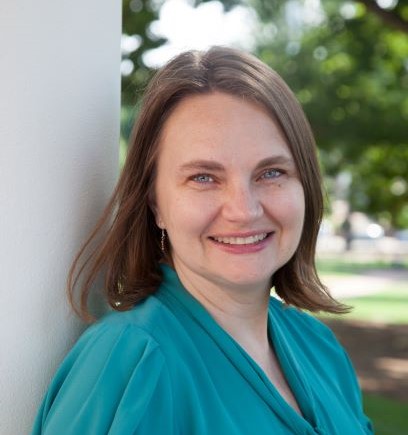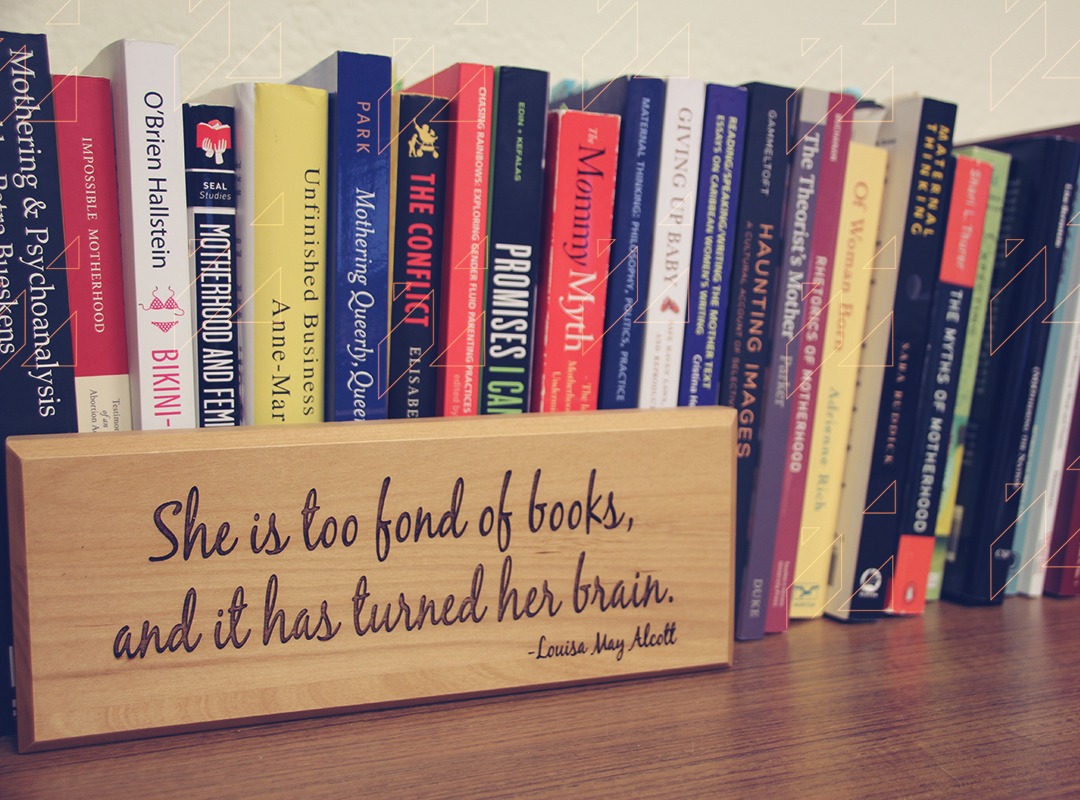Fictional Friends Who Embolden Us to Thrive
 In honor of International Day of the Girl (October 11), Abby Palko shares reflections on ways that authors explore the complexities of girlhood. Ms. Palko is Director of the Maxine Platzer Lynn Women’s Center at the University of Virginia.
In honor of International Day of the Girl (October 11), Abby Palko shares reflections on ways that authors explore the complexities of girlhood. Ms. Palko is Director of the Maxine Platzer Lynn Women’s Center at the University of Virginia.
This article, reprinted with permission, is from the blog PALKO POV: Fictional Friends Who Embolden Us to Thrive.
FICTIONAL FRIENDS WHO EMBOLDEN US TO THRIVE
Every so often, my daughter tries to make me commit at dinner: “No, really, Mommy: what’s your favorite book?” I hedge: favorite 5 authors? Favorite series? Favorite book with yellow on the cover? To be fair, I was absurdly excited when I recently discovered the Japanese concept of tsundoku. “I tsundoku” explains so much of my life.

If you insist that I select a single book, though, it would have to be L. M. Montgomery’s Emily of New Moon. This summer, my family traveled to Prince Edward Island. My daughter was reading Anne of Green Gables for her 6th grade summer reading and I seized the opportunity to reread Emily on location. As I’ve said before, I find Emily’s single-minded pursuit of her dreams inspiring. Emily chases her dreams and beauty with equal fervor. A cluster of asters spied on the cliff’s edge at the bay shore pulls Emily over the slope into danger: “She must get it – she had never seen farewell-summers of so dark and rich a purple.” But, as another character observes of her, “you always get what you go after, even with death slipping a thin wedge between.” Reaching for the purple stars myself, I felt the visceral pull of aspiration and the frisson of danger associated with it. While girls today are encouraged to follow their dreams, we still lack the social structures that would genuinely support this ambition. Furthermore, while girls are told they can be/do anything they want, they are also told their value lies in their physical appearance.

Just as Heraclitus pointed out that “No man ever steps in the same river twice,” I would argue that no reader ever reads the same book twice. This time, reading it with my 11-year-old in the plane seat next to me, I was struck by Emily’s fierce defense of her personal space and her bodily autonomy. In an early scene, for example, when she is introduced to her Uncle Wallace, he subjects her to an uncomfortable ritual when “coldly he bent forward and kissed her cheek.” Emily reacts passionately to this violation:
A sudden way of indignation swept over Emily’s soul. How dared he kiss her – he had hated her father and disowned her mother! She would have none of his kisses. Flash-quick, she snatched her handkerchief from her pocket and wiped her outraged cheek.
Her other aunts and uncles witness this exchange and while even the most sympathetic of them struggle with their response to her assertive impulse, the narrative voice unequivocally calls out the outrage. And it reminds Emily’s readers that they too have a right to bodily autonomy.
Access to and control over children’s (and women’s) bodies has long been a contentious debate. Children (and women) have suffered in the process. Seeing the grieving orphan who knows that her next shelter will be provided by one of these relatives draw a boundary is heartening. In addition to providing a private way for tweens and teens to work through thoughts and feelings, YA literature holds great potential as a tool for starting conversations that young people should be having with trusted adults before moving on to college and the workplace, as Julia Jacobs recently pointed out. UVA alumna Maria Padian explores ways some of these issues play out on college campuses in the powerful Wrecked.
No reader ever reads the same book twice.

Emily’s ferocity echoes across the century since Montgomery first published her Emily books in the early 1920s. A few weeks ago, Betsy Cornwell’s The Forest Queen was released, and I spent a recent (rainy) weekend in Woodshire Forest with a female Robin Hood, breathing air that “smells like light, bittersweet and fresh.” In our contemporary moment marked by growing economic inequality and racial tension, the maturation that accompanies Sylvie’s hero’s journey provides readers with light to see a path through the bittersweet to a fresh new world.
Silvie is strong and feisty and compassionate. On a hunt, she puts a wounded stag out of his misery with a clean shot through his heart when everyone else is afraid to take the shot from the Prince. She leaves her castle on what she calls a selfish note, to escape an arranged marriage, though the savvy reader recognizes that she is running away from the multiple ways she herself is a hunted creature. In the process, she provides shelter for Little Jane, the village girl who’d become pregnant after she was assaulted. While legend focuses on the class inequities of Robin Hood’s world, Cornwell’s version highlights instead the ways that gender and racial identity are used to subjugate people.
The community drawn to Sylvie is one of folks who know deeply that no one has the right to use another’s body for their own assertion of power.
Sylvie, always depicted as well-meaning, slowly comes to see the ways that her existence in the castle enabled her blindness to the realities faced by the villagers. Driven by a desire to prove herself and shed the label “naïve,” she makes a conscious decision to use the privilege her birth bestowed on her to ensure that another woman could safely exercise her choice to become a mother. Rejecting oppressive gender norms empowers Sylvie and her companions to make a tangible difference in their community.
Little Jane helps Sylvie to see the radical nature of this community that forms around them in the forest: “We are rebels, Sylvie, if only because we’re living our own lives, not the ones they’d choose for us. Not the ones your brother would choose. And living is … Just living is fighting, sometimes.” Sylvie comes to understand that they were rebelling “every time we laughed together, ate together, built shelter for each other, or dressed each other’s wounds.” The community drawn to Sylvie is one of folks desperate to survive, folks embolded to thrive. It is one of folks who know deeply that everyone has the right to bodily safety and that no one has the right to use another’s body for their own assertion of power.

It would be anachronistic, but Sylvie nearly quotes Andre Lorde’s call for self-care. In a journal entry written during her years living with cancer, Lorde writes, “Caring for myself is not self-indulgence, it is self-preservation, and that is an act of political warfare.” Emily, too, in her quiet rebellions against babyish aprons and her defiant protection of her manuscripts, shows readers a path that leads to a healthy sense of empowered autonomy. It’s not a shield that can protect women from harassment, but it is a model of standing up to it that asserts one’s right to reject it. At a moment when many women are speaking up to share their experiences of sexual assault, fictional friends like Emily and Sylvie remind readers of all ages of the costs borne by those whose bodily autonomy is breached and offer an encouraging model of empowerment.
- Having a Drink With Your Donkey: The Absurd in Antiquity
- What Happens to UVA’s Recycling? A Behind the Scenes Look at Recycling, Composting, and Reuse on Grounds
- Finding Your Center: Using Values Clarification to Navigate Stress
- UVA Club of Atlanta: Virtual Pilates Class
- UVA Club of Fairfield/Westchester: Cavs Care - Food Pantry Donation Drive
- UVA Club of the Palm Beaches: Hoo-liday Cruise